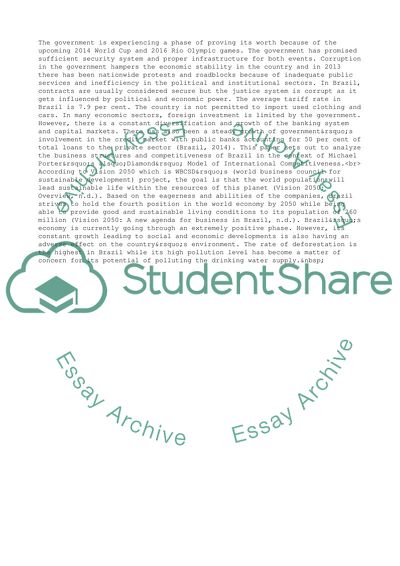Cite this document
(“Use Michael Porters Diamond Model of International Competitiveness to Assignment”, n.d.)
Use Michael Porters Diamond Model of International Competitiveness to Assignment. Retrieved from https://studentshare.org/business/1632017-use-michael-porters-diamond-model-of-international-competitiveness-to-analyse-the-business-structures-and-competitiveness-of-brazil
Use Michael Porters Diamond Model of International Competitiveness to Assignment. Retrieved from https://studentshare.org/business/1632017-use-michael-porters-diamond-model-of-international-competitiveness-to-analyse-the-business-structures-and-competitiveness-of-brazil
(Use Michael Porters Diamond Model of International Competitiveness to Assignment)
Use Michael Porters Diamond Model of International Competitiveness to Assignment. https://studentshare.org/business/1632017-use-michael-porters-diamond-model-of-international-competitiveness-to-analyse-the-business-structures-and-competitiveness-of-brazil.
Use Michael Porters Diamond Model of International Competitiveness to Assignment. https://studentshare.org/business/1632017-use-michael-porters-diamond-model-of-international-competitiveness-to-analyse-the-business-structures-and-competitiveness-of-brazil.
“Use Michael Porters Diamond Model of International Competitiveness to Assignment”, n.d. https://studentshare.org/business/1632017-use-michael-porters-diamond-model-of-international-competitiveness-to-analyse-the-business-structures-and-competitiveness-of-brazil.


